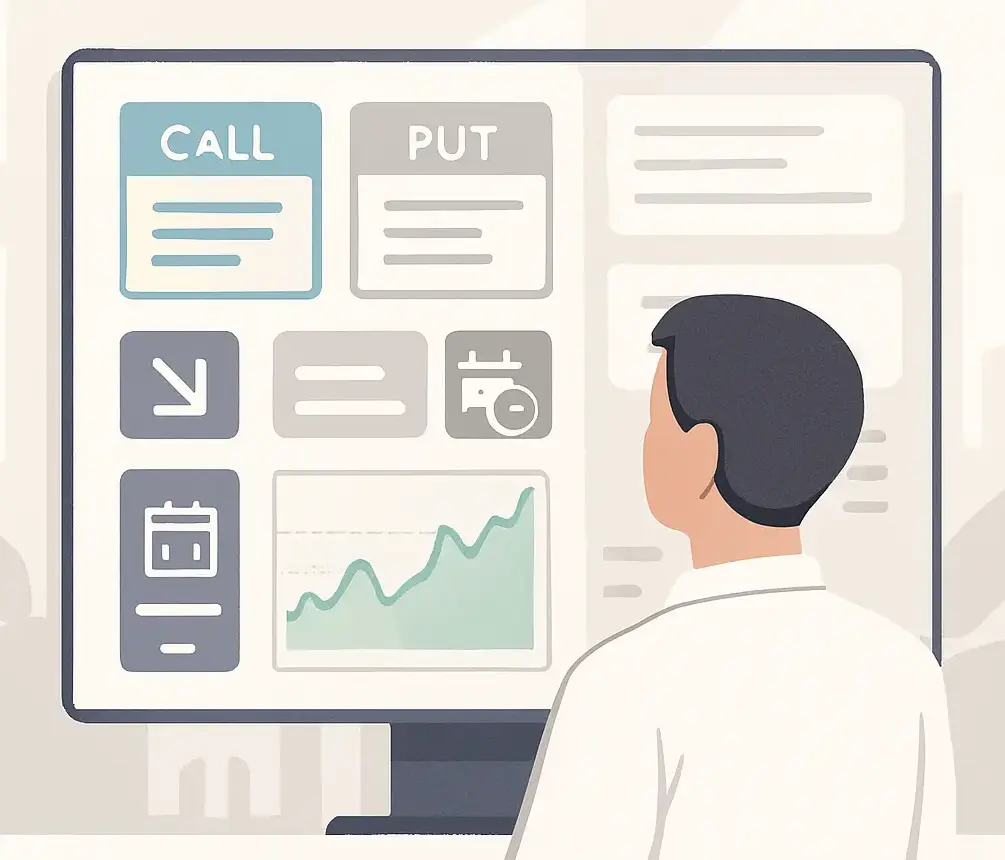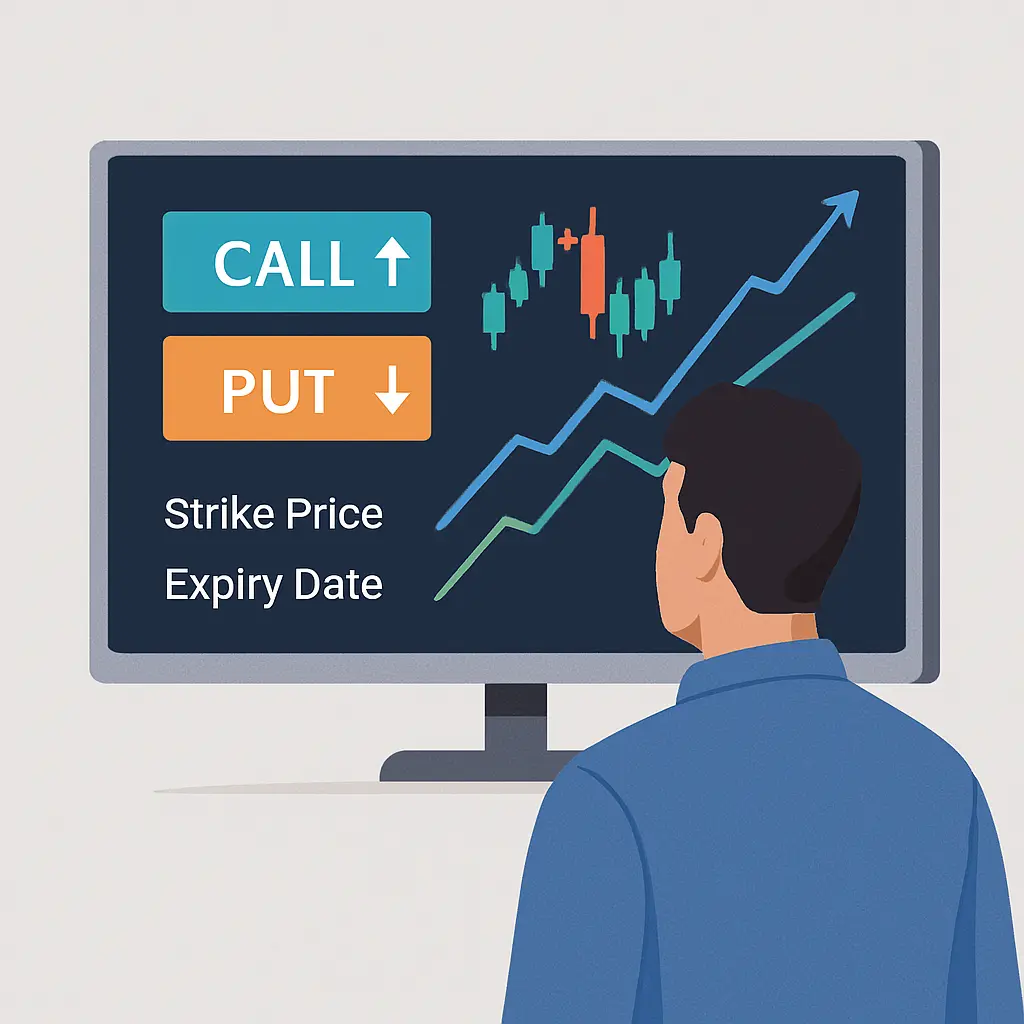How to do option trading
If you are starting your investment in the share market, investing in stocks can be an easier path for you than trading in options. But the options segment has a lot to offer you with a little investment also. So why not try and learn how to trade in options.
Request a Call Back
What is option market?
The options market is known as the derivative segment of the share market. The derivative segment deals in contracts with a time horizon, i.e., a limited period. People use the options market to earn big with little investment and to minimize risk using hedging. The options market is related to the contract with time. It means the options market comes with an expiry date. Now, let us learn some new terms related to the option segments, such as strike price, premiums, OTM, call option, put option, and expiry.
Strike Price
This price indicates the value on which the trader wishes to exercise the trade. For example, let’s assume the Bank Nifty is currently trading on 10000. If you want to trade-in options you have to select strike price. The value of the strike price should be near this 10000 rupees now if you predict the Bank Nifty will go down from this price, you can select a strike price accordingly, like 9900 or 9800. If selecting the right strike price is a bit confusing, you can check ourBest Bank Nifty Tips.
Premiums
Premium is the value that you have to pay while trading in options. The premium value is the price that keeps on changing with the change in the price of Nifty or Bank Nifty options. Premium value depends on the strike price you choose. If you choose a strike price that is in the money, your premium value is high. If you choose a strike price that is out of the money, the premium is comparatively low.
In The Money
In the money if you select a strike price that is near the ongoing price of the options security, it is called in the money.
Out The Money
Out the money if you select the strike price that is far from the ongoing price of the options, it is called out of the money.
For example, if the current price of the Bank Nifty is 10,000, you select a strike price of 9800; it is called “in the money” because it is a nearby ongoing price, but if you select 9200, it is called “out of the money” because it is far from the ongoing price.
Call Option
Call option if you expect the market to move upward from the ongoing position, you buy a call option.
Put Option
Put option if you expect the market to move downward from the ongoing position you buy a put option.
For example, the ongoing price of Bank Nifty, let’s say 10000, according to you, if it is about to move +200 points, you will buy a call option. If you think the market will go down from its ongoing position of -200 points, you will buy a put option.
Expiry
Every contract in the derivative market comes with an expiry date. This means if you have to trade in the derivatives market, you have to trade on a particular time horizon.
How to Trade In Options?
Options trading is more popular among the market. Whether you’re aiming to hedge your positions, which are already exited, or to capture the opportunities in the market. Also, traders need to understand how important the option trading approach is. Visit our page, which gives more information about option trading tips. This blog will help you through the basics of getting started with option trading.
Need to understand the option trading

01.
Understand the components of Options
Options trading is more popular among the market. Whether you’re aiming to hedge your positions, which are already exited, or to capture the opportunities in the market. Also, traders need to understand how important the option trading approach is. This blog will help you through the basics of getting started with option trading.
If you wish to read about the effective nifty option tips, click on the button
02.
What is option trading?
Option trading involves buying and selling contracts that give you the right to buy or sell an underlying stock at a price within a particular time frame. Here are two main types of options:
- Call options give the right to the buyer to buy an underlying asset.
- Put options give the buyer the right to sell the asset.
These contracts are mostly used for speculation, income generation, and risk management.

Identify your trading objectives
Ask yourself before entering the trade:
Are you willing to hedge your existing portfolio?
Are you looking for a profit from short-term price movements?
Do you want to aim to make money through premium decay?
Each goal requires a different strategy, such as buying calls, writing puts, or using spreads.
Learn to Lead Option Chain
An option chain provides a snapshot of available call and put options for a particular asset, which is categorized by strike price and expiry dates.
Also, it displays important data such as open interest (OI), last traded price, and implied volatility. Analyzing this data can be helpful.
Start with Simple Strategies
If you’re a beginner, start with basic strategies like:
When you expect a price rise, buy a call option. Likewise, when you expect a fall, buy a put option. If you hold shares and want to generate income, use a covered call option.
Once you’re comfortable in option trading, you can explore the strategies like straddles, strangles, and iron condors.
Manage your Risk
Option trading involves high risk, especially due to time decay and price volatility. These are the key risk management practices include: Setting proper stop-loss and target levels.
Traders need to avoid overleveraging. Tracking domestic and global market news and economic events.
